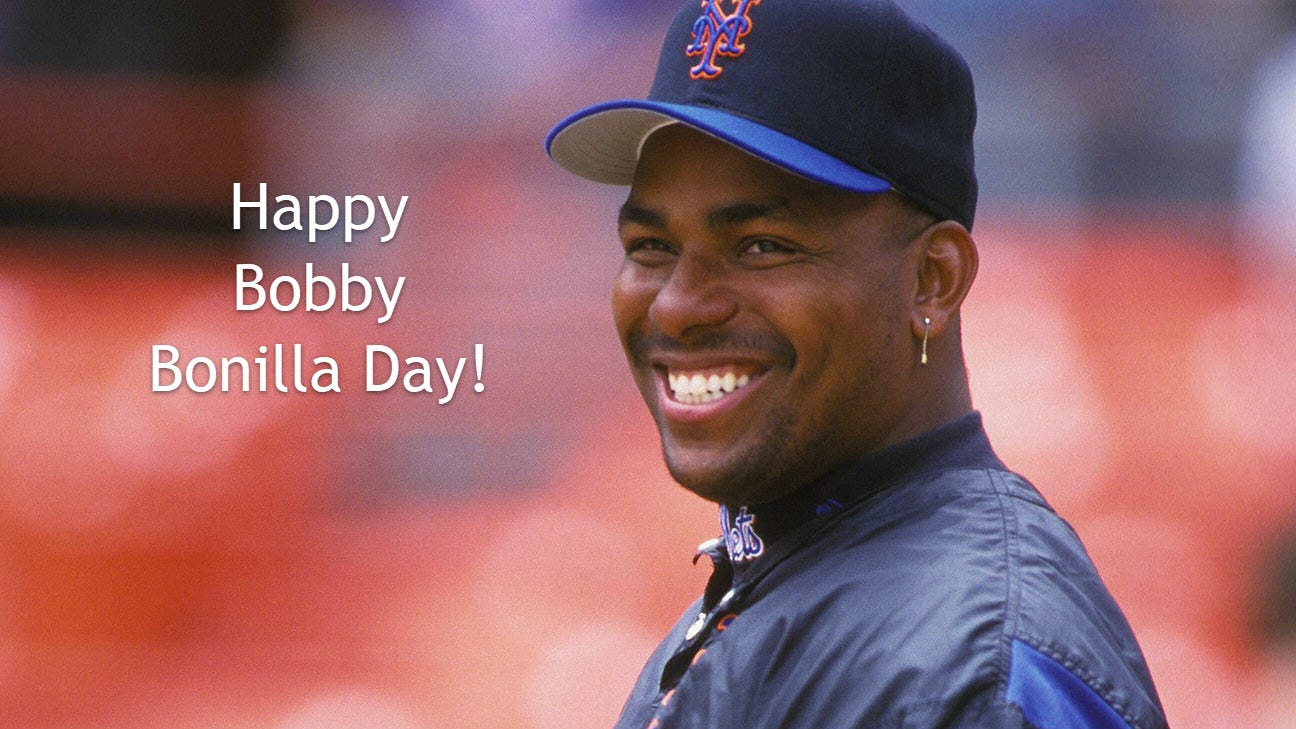Bobby Bonilla Day: Decoding the Puzzling Annual Windfall July 1st has become an unusual day in the annals of Major League Baseball, designated as “Bobby Bonilla Day.” On this date, former New York Mets outfielder Bobby Bonilla receives an annual payment of $1.19 million, a contractual oddity that has garnered both bewilderment and curiosity among
Bobby Bonilla Day: Decoding the Puzzling Annual Windfall
July 1st has become an unusual day in the annals of Major League Baseball, designated as “Bobby Bonilla Day.” On this date, former New York Mets outfielder Bobby Bonilla receives an annual payment of $1.19 million, a contractual oddity that has garnered both bewilderment and curiosity among baseball enthusiasts. This article delves into the genesis and implications of Bobby Bonilla Day, exploring the reasons behind the peculiar financial arrangement.
The Genesis of a Deferred Payment
The roots of Bobby Bonilla Day lie in a contentious contract negotiation between Bonilla and the Mets during the 1999 offseason. After a standout season in which he hit 34 home runs and drove in 115 RBIs, Bonilla demanded a lucrative long-term contract extension. However, the Mets, facing financial constraints, were reluctant to meet his demands.
As a compromise, the Mets proposed a unique deferred payment structure. Instead of receiving a large lump sum up front, Bonilla agreed to receive 25 annual payments of $1.19 million, starting in 2011 and lasting until 2035. This arrangement allowed the Mets to spread out Bonilla’s salary over a longer period, easing the immediate financial burden.
The Business Rationale
From a financial perspective, the Mets’ decision to defer Bonilla’s payment made sense. By spreading out the payments, they were able to reduce their annual salary obligations and free up funds for other roster moves. Additionally, deferring payments can provide tax benefits as the future value of the payments is discounted due to the time value of money.
From Bonilla’s perspective, the deferred payment structure offered him long-term financial security. It provided him with a guaranteed stream of income long after his playing career ended. Additionally, the annual payments were structured to increase slightly each year, providing him with a modest hedge against inflation.

Picture by: https://marypatcampbell.substack.com/p/happy-bobby-bonilla-day-2024
The Perplexed Public
Despite the financial logic underpinning Bobby Bonilla Day, the general public has been puzzled by the arrangement. Many question why the Mets would continue to pay an exorbitant amount to a player who has not played for the team in decades. Others argue that the payment is simply a symptom of poor financial management by the Mets organization.
The Legacy of Bobby Bonilla Day
The legacy of Bobby Bonilla Day is likely to be a mixed one. On the one hand, it serves as a cautionary tale about the perils of deferred payments and the need for careful financial planning in sports. On the other hand, it is a testament to the unpredictable and often bizarre nature of the business of professional sports.
The annual payment has become a source of amusement and derision among baseball fans, who have dubbed it “Bonilla’s Bonus” or “Bag Day.” It has also spawned a cottage industry of memes, jokes, and articles speculating about how Bonilla spends his millions.
The Enduring Mystery
As the years go by, Bobby Bonilla Day continues to fascinate and perplex baseball fans. It is a reminder that even in the glamorous world of professional sports, financial decisions can have long-lasting consequences. The annual payment to Bobby Bonilla is a peculiar footnote in MLB history, a testament to the complexities and oddities that make the sport so captivating.
Frequently Asked Questions about Bobby Bonilla Day
- Why does Bobby Bonilla still get paid by the Mets?
Bobby Bonilla receives an annual payment of $1.19 million from the Mets due to a deferred payment agreement that was part of his contract in 1999.
- How much has Bobby Bonilla made from the Mets since he retired?
As of July 1, 2023, Bobby Bonilla has received $29.75 million from the Mets in deferred payments. By the end of the payment schedule in 2035, he will have received a total of $59.75 million.
- Is the deferred payment structure common in Major League Baseball?
Deferred payment structures are not common in Major League Baseball, but they have been used in a few cases, particularly when teams are facing financial constraints.
- Why did the Mets agree to defer Bobby Bonilla’s payments?
The Mets agreed to defer Bonilla’s payments in order to spread out his salary over a longer period and reduce their immediate financial burden.
- Is the deferred payment structure financially beneficial to Bobby Bonilla?
The deferred payment structure provides Bobby Bonilla with long-term financial security and a modest hedge against inflation. However, the future value of the payments is discounted due to the time value of money.
















